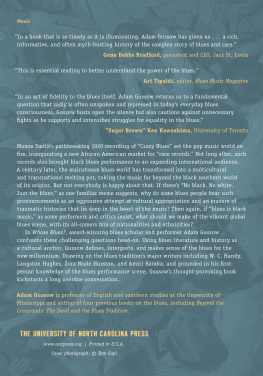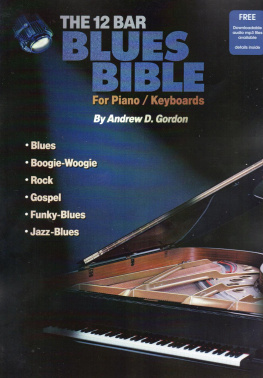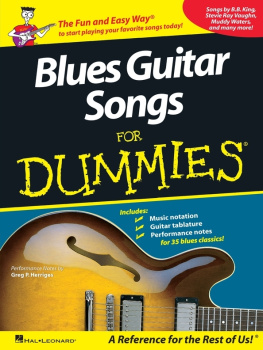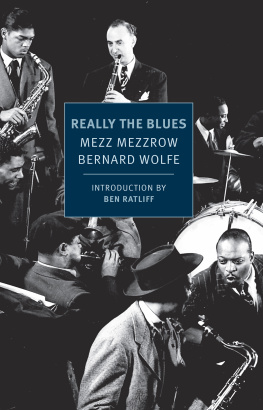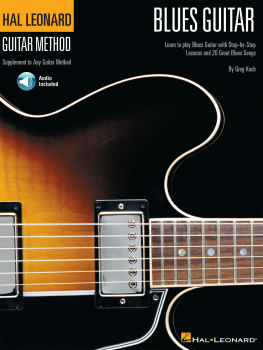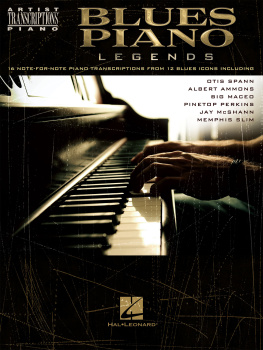

Published by The History Press
Charleston, SC 29403
www.historypress.net
Copyright 2014 by Rosalind Cummings-Yeates
All rights reserved
First published 2014
e-book edition 2014
ISBN 978.1.62584.815.4
Library of Congress Cataloging-in-Publication Data
Cummings-Yeates, Rosalind.
Exploring Chicago blues : inside the scene, past and present / Rosalind Cummings-Yeates ; foreword by Billy Branch.
pages cm
Includes bibliographical references and index.
print edition ISBN 978-1-62619-322-2
1. Blues (Music)--Illinois--Chicago--History and criticism. 2. Musical landmarks--Illinois--Chicago. I. Title.
ML3521.C86 2014
781.6430977311--dc23
2014004938
Notice: The information in this book is true and complete to the best of our knowledge. It is offered without guarantee on the part of the author or The History Press. The author and The History Press disclaim all liability in connection with the use of this book.
All rights reserved. No part of this book may be reproduced or transmitted in any form whatsoever without prior written permission from the publisher except in the case of brief quotations embodied in critical articles and reviews.
For Alex and all the ancestors who went before
I/am
Just telling
A little/bout what
I/feel
When/you tell
What/you feel and
Tell/it like
You/mean it.
You/singing
Blues.
One Narrator, Sterling D. Plumpp
Contents
Foreword
On August 20, 1969, the greatest blues festival in history took place. Produced by the legendary Willie Dixon and Murphy Dunne, the son of one of Mayor Richard J. Daleys top political allies, the Bringing the Blues Back Home festival boasted an incredible lineup of assorted legendary luminaries, a production that remains unequalled to this day. The promotional poster listed a virtual whos who of Chicago blues talent. According to Jeff Johnsons Chicago Sun Times article on June 6, 2004, the featured artists included: Luther Allison, Fred Below, J.T. Brown, Bobby Davis (father of recently slain guitarist Eric Davis), Jimmy Dawkins, Bo Diddley, Sleepy John Estes, Betty Everett, Buddy Guy, John Lee Hooker, Lightnin Hopkins, Big Walter Horton, Homesick James, Sam Lay, Lafayette Leake, Johnny Littlejohn, Robert Lockwood Jr., Big Mac, Little Milton, Little Brother Montgomery, Otis Spann, Hound Dog Taylor, Koko Taylor, Sonny Thompson, Big Mama Thornton, Muddy Waters, Junior Wells, Howlin Wolf, Johnny Young and Mighty Joe Young. According to Murphy Dunne, Wolf didnt perform because he was feuding with Muddy at the time and refused to appear on the same bill. Dunne also doesnt recall John Lee Hooker showing up.
It was a day that forged my destiny; it was the first time Id ever heard the blues. If you can remember the feeling you experienced as a child on the morning of your favorite Christmas, you will know how I felt that day. I was completely blown away. And it still seems incredible to me that, seven years after witnessing the quintessential blues festival produced by Willie Dixon, I became a touring member of Willie Dixons Chicago Blues All-Stars.
It wasnt long after that I found myself immersed in the depth of the Chicago blues scene, frequenting practically every blues club I could find. At that time, the majority of the clubs were on Chicagos black South Side and West Side neighborhoodsmostly black musicians playing to mostly black audiencesbut the blues was also creeping into the whiter North Side and downtown areas, where you find the majority of the clubs today. On any given night, you might catch Junior Wells, Buddy Guy, Lonnie Brooks, Magic Slim, Eddie C. Campbell, Buddy Scott and the Rib Tips, Jimmy Dawkins, J.B. Hutto, James Cotton, Big Walter Horton, Carey Bell, Little Mack Simmons, Son Seals, Johnny Littlejohn, Louis Myers and The Aces, Buster Benton and Foree Superstar. There was the ubiquitous Lefty Dizz, the wild guitar wizard, who often went out of his way to welcome us young cats into the fold. And that was just scratching the surface. The lesser-known but no less talented musicians were also making great music: John Wrencher, Good Rockin Charles, Necktie Nate, Big Leon Brooks, Arlene Brown, Willie Kent, Bonnie Lee, Johnny Twist, Hip Linkchain and dozens, maybe hundreds, more. And of course, there were the older cats, established legends such as Homesick James, Kansas City Red, Floyd Jones, Eddie Taylor, Sunnyland Slim, Honey Boy Edwards, Big Red and the venerable boogie-woogie pianist Jimmy Walker, whom I will always fondly remember for giving me my first regular gig in a band. I played with and was welcomed by them all.
I witnessed and participated in a bygone era, a time when each musician and singer was unique in his or her own right. Lefty Dizz was almost as famous for his flamboyant guitar antics as he was for his Dizzisms. Its gonna be a mess, I tell ya; Im the Black Tornado; and Dont look for me cuz I just might show up! were just a few of his many trademark utterances. Junior Wells, always dressed to the nines, had his own comical way of delivering a song, sung in a perfect voicealways entertaining, always classically Junior. Big Voice Odom sang with a deepness that took you to church. Hound Dog Taylor defied logic by getting such an incredible tone out of his made in Japan guitar, the one with the multicolored plastic buttons. I was always amazed to watch his feet tap simultaneously to the beat of his playing but in opposite directions.
Buddy Guy, Lonnie Brooks, Eddie Shaw, Billy Boy Arnold, Jimmy Johnson, Eddie C. Campbell, Sam Lay and Otis Rush are among the last survivors of their generation in Chicago. I reflect with bitter sweetness on the great times spent in Theresas, the Checkerboard, Peppers, Florences, Artis and the Queen Bee Loungethose wonderfully entertaining souls, those cats whose stories would make me laugh till I cried, the guys with whom I would share a half pint, the guys with whom I had the honor of sharing the stage are all but gone.
When I first entered the blues realm, there were relatively few African American musicians of my generation playing the blues in Chicago; most of the young cats by then were white. In retrospect, our appearance at the now historic New Generation of Chicago Blues tour, which showcased fifteen of us at the Berlin Jazz Festival in 1977, seems to highlight that fact. Assembled by Jim and Amy ONeal (founders of Living Blues magazine) and accompanied by Willie Dixon, who assumed the role of emcee and patriarch, we were the answer to the question: Are there any young black musicians playing the blues? We were enthusiastically received. It is noteworthy to mention that this was the first performance of my band, the Sons of Blues, whose members at that time, except for me, were all sons of important bluesmen.
Although the blues landscape is markedly different today, it is important to acknowledge the participation of the nonAfrican American artists who continue to have a profound impact on the genre. In contrast to the low presence of young black musicians, there was an abundance of young whites who shared a similar passion with me. They were just as apt to be on the bandstand playing as they were in the audience. Make no mistake about it: there were great young black players on the scene then, a handful of whom remain active today. Lurrie Bell, Zora Young, Big Time Sarah, Melvin Taylor, Killer Ray Allison, Harmonica Hinds, Johnny B. Moore and Vernon Harrington are still thrilling audiences in Chicago. But the white cats were having a big impact. Harmonica players Paul Butterfield, Charlie Musselwhite and Corky Siegel of the Siegel Schwall Band were already hugely popular by the time I came along. More than a decade later, Stevie Ray Vaughn emerged as the new Jimi Hendrix and ushered in a whole new generation of blues fans, many of them white.
Next page


